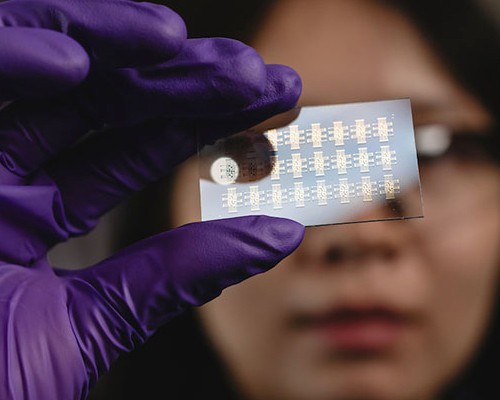Industry News
Scientists Turn to Human Eye Inspiration to Enhance Efficiency in Computer Vision
 US researchers at Purdue University are charting a new course in computer vision technology, steering away from conventional silicon architecture. Inspired by nature, their innovative approach aims to lay the groundwork for an artificial retina, promising enhanced efficiency in applications such as self-driving cars and autonomous robots.
US researchers at Purdue University are charting a new course in computer vision technology, steering away from conventional silicon architecture. Inspired by nature, their innovative approach aims to lay the groundwork for an artificial retina, promising enhanced efficiency in applications such as self-driving cars and autonomous robots.
Professor Jianguo Mei, the Richard and Judith Wien Professor of Chemistry in Purdue’s College of Science, highlighted the energy bottleneck associated with current computer vision systems. Mei emphasized the team's long-term objective of leveraging biomimicry to address the challenges of dynamic imaging with reduced data processing. He stated, “By mimicking our retina in terms of light perception, our system can be potentially much less data-intensive.”
The research team drew inspiration from the light perception mechanisms in retinal cells, mirroring nature's electrochemical reactions triggered by light. Their prototype device, termed an "organic electrochemical photonic synapse," capitalises on a memory-like feature, storing information about received light. This innovative approach holds the potential to significantly decrease the amount of data processing required for understanding moving scenes, making it a more energy-efficient and error-tolerant alternative to traditional computer vision.
Presently, robotic and autonomous devices rely on digital cameras with silicon-based photosites to capture and process images. However, Mei's solution, while lower in resolution compared to silicon computing, excels at sensing movement. The prototype device, housing 18,000 transistors on a 10-centimeter square chip, offers a resolution of a few hundred microns. Mei envisions further improvements by lowering the resolution to around 10 microns.
Mei’s team employs a unique process, converting light to a flow of charged atoms called ions before generating an electrical signal. This mechanism, akin to how retinal cells transmit light inputs to the brain, sets their approach apart from traditional methods. The resulting electrochemical transistor distinguishes itself in performance, with a charge imbalance that increases steadily with repeated exposure to light and decays more slowly than competing designs.
With plans for future iterations to incorporate flexible materials, Mei's team envisions producing a wearable and bio-compatible version of their innovative technology. As they continue to refine their biomimetic approach, the implications for human-machine interfaces and neuromorphic computing applications are becoming increasingly promising, marking a significant leap forward in the realm of computer vision technology.



